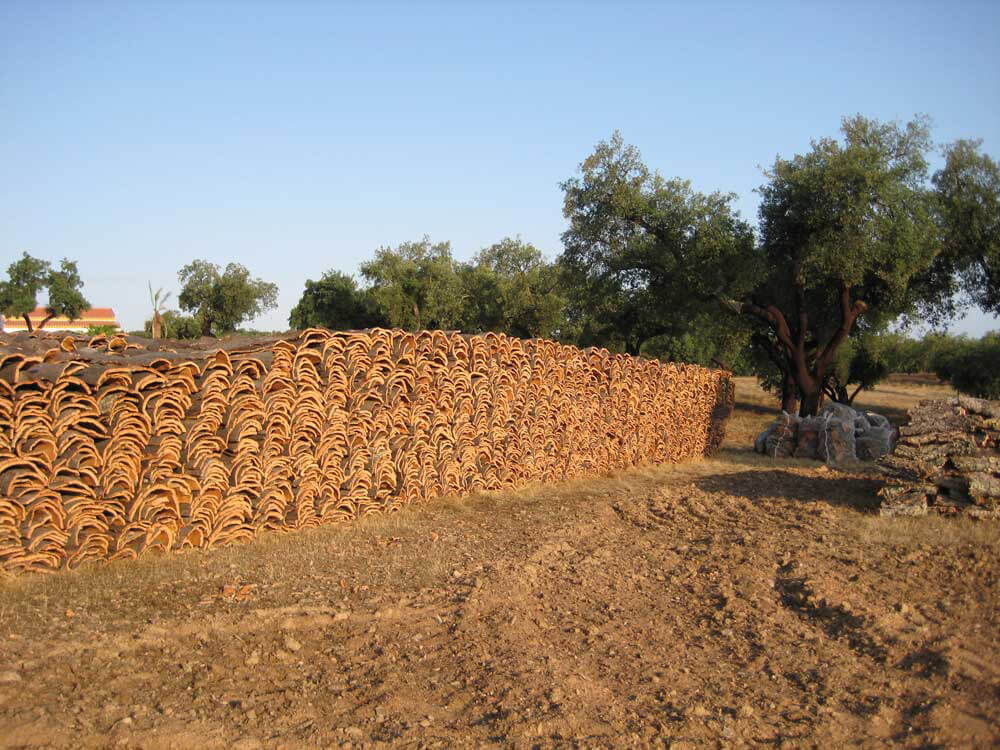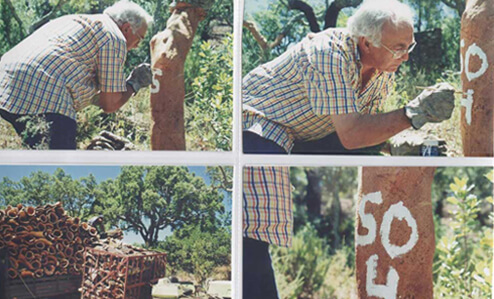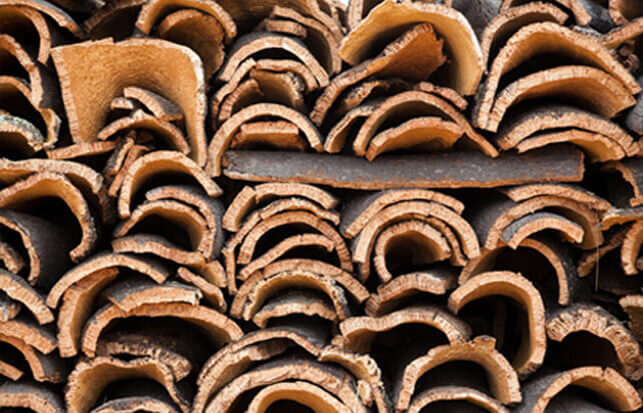
What’s so special about cork? Cork is a wonder of nature, and in today’s environmentally concerned society it’s a great choice!
There are many facets of the cork industry. Most people don’t realize that cork is the bark of trees that grow almost exclusively in one region of the world. The cork oak tree grows in Portugal and other countries that border the western edge of the Mediterranean basin and on the Atlantic coast, always close to vineyards. The tree is cultivated in Spain, Portugal, Algeria, Morocco, France, Italy, and Tunisia. However, Portugal accounts for about 50% of the world cork harvest.
The supply of cork is limited, but guaranteed. Cork trees occupy vast areas and are constantly reproducing. The cork tree must be approximately 25 years old before the first extraction (virgin cork), and then 9 years is necessary for each future harvest. The cork is harvested by removing the bark of the tree every 9-10 years. Fortunately, the cork tree lives for 150-250 years, which allows for 15-20 extractions. No trees are cut down during the harvesting process. In fact, cork harvesting is done entirely without machinery, being dependent solely on human labor. Usually five people are required to harvest the tree’s bark, using a small axe. The process requires training, due to the skill required to harvest the bark without harming the tree.


When the trunk has reached a circumference of at least .80 meters, which corresponds to a virgin cork layer of 30-35mm, the process of unmasking or peeling of the cork may take place. The expression “unmasking the virgin cork” is particularly appropriate since that part of the tree, which is revealed when the virgin cork is removed, is called the mother. The stripping, when well done, does not harm the trees, because the first layer of reproduction cork merges with the continuously developing virgin layer in the unpeeled part of the tree.
Cork is a unique product due to its lightness, elasticity, impermeability, insulation, and resistance to wear. It is also fire retardant, and hypoallergenic. It can be used for many applications from interior design to fashion, as well as becoming a bottle stopper in your liquor bottle.
By choosing to use cork products, you are preserving and renewing a natural resource and protecting the environment. Cork is a “green” product.


What’s so special about cork? Cork is a wonder of nature, and in today’s environmentally concerned society it’s a great choice!
There are many facets of the cork industry. Most people don’t realize that cork is the bark of trees that grow almost exclusively in one region of the world. The cork oak tree grows in Portugal and other countries that border the western edge of the Mediterranean basin and on the Atlantic coast, always close to vineyards. The tree is cultivated in Spain, Portugal, Algeria, Morocco, France, Italy, and Tunisia. However, Portugal accounts for about 50% of the world cork harvest.

The supply of cork is limited, but guaranteed. Cork trees occupy vast areas and are constantly reproducing. The cork tree must be approximately 25 years old before the first extraction (virgin cork), and then 9 years is necessary for each future harvest. The cork is harvested by removing the bark of the tree every 9-10 years. Fortunately, the cork tree lives for 150-250 years, which allows for 15-20 extractions. No trees are cut down during the harvesting process. In fact, cork harvesting is done entirely without machinery, being dependent solely on human labor. Usually five people are required to harvest the tree’s bark, using a small axe. The process requires training, due to the skill required to harvest the bark without harming the tree.

When the trunk has reached a circumference of at least .80 meters, which corresponds to a virgin cork layer of 30-35mm, the process of unmasking or peeling of the cork may take place. The expression “unmasking the virgin cork” is particularly appropriate since that part of the tree, which is revealed when the virgin cork is removed, is called the mother. The stripping, when well done, does not harm the trees, because the first layer of reproduction cork merges with the continuously developing virgin layer in the unpeeled part of the tree.

Cork is a unique product due to its lightness, elasticity, impermeability, insulation, and resistance to wear. It is also fire retardant, and hypoallergenic. It can be used for many applications from interior design to fashion, as well as becoming a bottle stopper in your liquor bottle.
By choosing to use cork products, you are preserving and renewing a natural resource and protecting the environment. Cork is a “green” product.
Quick Links
Get In Touch
Toll Free: 1.800.796.CORK (2675)
Phone: 702-272-0048,
Fax: 702-272-0668
E-mail: [email protected]

